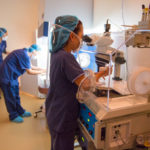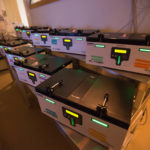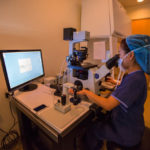IVF Treatments at the Fertility Institute of Hawaii
In vitro fertilization and embryo transfer (IVF-ET) was first successfully used in humans almost 40 years ago. Since then more than 7 million babies have been born worldwide utilizing IVF technology. The Fertility Institute of Hawaii uses state of the art technology and superiorly trained physicians and staff to treat the patients of Hawaii and the Pacific with all available advanced reproductive technologies.

In vitro fertilization can be used as a primary therapy for some patients (severe sperm problems, occluded or damaged fallopian tubes, diminished ovarian function, for example) or as a treatment when more conservative therapies have failed. During in vitro fertilization, the ovaries are stimulated to produce multiple follicles. The eggs from those follicles are retrieved during an ultrasound guided procedure and then combined in the embryology laboratory. If fertilization occurs, the resulting embryos are allowed to grow for 3 to 6 days in the laboratory. At the appropriate time, an appropriate number of embryos are transferred in to the uterine cavity, where they hopefully will implant. There are a number of other procedures that can assist in making IVF successful, including intracytoplasmic sperm injection (ICSI), assisted hatching (AH), blastocyst culture, and pre-implantation genetic diagnosis (PGD).



